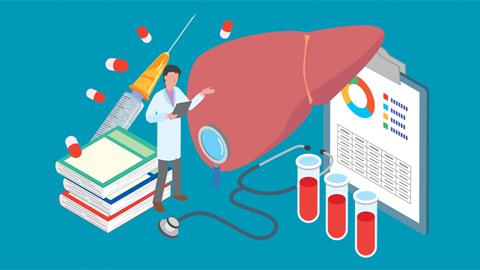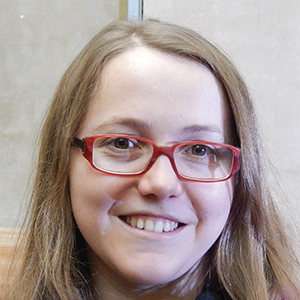JLR: The art and science of breathing
Breathing is effortless, until each breath becomes a struggle. Millions of Americans suffer from lung diseases. One syndrome affecting the lungs, pulmonary alveolar proteinosis, PAP for short, is both rare and mysterious.
PAP can be familial or sporadic, and it has been linked to dysfunctions in several genes. Nevertheless, “in most cases, the cause of PAP is unknown,” says Elizabeth J. Tarling, a researcher at the University of California, Los Angeles. What’s worse, she adds, is that “it is a disease that often affects otherwise healthy people in the prime of their lives.”
PAP is marked by the abnormal accumulation of lipids and proteins in certain parts of the lungs. The only available treatment is the flushing out of the lungs to remove buildup, which some PAP patients require on a regular basis. Tarling and other researchers hope that better understanding the genes involved in PAP will lead to the development of better therapies.
A recent study by Tarling’s team published in the Journal of Lipid Research found that a gene variant in PAP patients affects the activation of a protein called ABCG1. Short for ATP-binding cassette transporter 1, ABCG1 is highly expressed in certain cells involved in the clearing of the lipids and other molecules that line parts of the airways. Tarling’s study shows for the first time how the presence — or, more importantly, the absence — of ABCG1 affects two crucial cell types in the lungs specifically.
Out of balance
The mammalian air pathway resembles an intricate, upside-down tree, with the trachea as a trunk, bronchi and bronchioles as branches, and alveoli as leaves.
Alveoli are made up of two types of epithelial cells and macrophages. Type 1 epithelial cells are thin and flat and make up most of the alveolar wall. Type 2 epithelial cells, called T2 cells for short, secrete a surfactant, a fluidlike mixture of cholesterol and proteins that coat the alveoli. The macrophages, which form the defense system of the lungs, clear out the microorganisms and particles brought in by the circulating air.
The gas exchange that constitutes breathing requires expansion of the alveoli. Surfactant lowers the surface tension opposing alveoli expansion and prevents alveoli from collapsing. “Surfactant deficiency is fatal,” Tarling says, “and surfactant dysfunction results in respiratory distress.”
Re-creating the problem
How excessive surfactant in alveoli is cleared is poorly understood. “PAP patients lose the ability to clear surfactant in their lungs, which leads to shortness of breath and even respiratory failure,” Tarling says.
Previous studies have shown that mice lacking the ABCG1 transporter in their whole body have symptoms like those of PAP patients with age-related clogging of the alveoli and chronic inflammation. They’ve also shown that T2 cells and macrophages, which normally re-uptake lipids and proteins from the surfactant, are increased significantly in number in mice lacking ABCG1 and that the mice display abnormal lipid enrichment.
With this in mind, Tarling’s team developed different types of mice to tease out how ABCG1 affects T2 cells and macrophages specifically.
The researchers found that the presence of macrophages lacking ABCG1 in mice with alveolar epithelial cells that did have ABCG1 was sufficient to reduce alveolar spaces and to lead to lipid enrichment. This shows that ABCG1 absence in macrophages alone can lead to PAP-like symptoms.
However, the presence of macrophages with ABCG1 in mice that otherwise lack ABCG1 was not sufficient to prevent PAP-symptoms, indicating that ABCG1 function in other cell types, most likely in T2 cells, also is required for lung health.
The researchers also deleted ABCG1 in T2 cells specifically and found that, while distinct from the phenotype of ABCG1 deletion in macrophages, the deletion in T2 cells still led to reduction in alveolar space and lipid enrichment.
Finally, they found that macrophages lacking ABCG1 affect the number, shape and size of ABCG1-containing T2 cells. Thus, ABCG1 function in macrophages and T2 cells is crucial to lung health.
In the end, Tarling says, the group’s study shows that “ABCG1 has a critical role in normal lung T2 epithelial cells” and that there is intercell communication between macrophages and T2 cells to regulate surfactant uptake, all of which opens new strategies for drug development.
Enjoy reading ASBMB Today?
Become a member to receive the print edition monthly and the digital edition weekly.
Learn moreGet the latest from ASBMB Today
Enter your email address, and we’ll send you a weekly email with recent articles, interviews and more.
Latest in Science
Science highlights or most popular articles

Iron could be key to treating a global parasitic disease
A study has found that leishmaniasis causes body-wide changes in iron balance, leading to red blood cell damage.

Environmental DNA is everywhere
The ability to extract trace bits of DNA from soil, water, and even air is revolutionizing science. Are there pitfalls?

Early COVID-19 research is riddled with poor methods and low-quality results
The pandemic worsened, but didn’t create, this problem for science.

From the journals: MCP
Three views of mass spec: analyzing secreted protein spectra, imaging mass spectrometry for clinical use and spectral libraries for MS data analysis. Read about these recent papers.

Understanding the fat science
Researchers at UCLA investigate lipid remodeling in the liver for energy generation.

No oxygen? No problem
By studying how electric fish survive in hypoxic streams for months at time, researchers may find new ways to target tumors.

